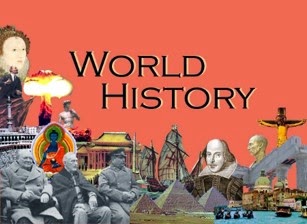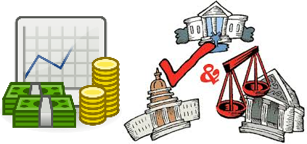Artificial Intelligence (AI) is a transformative technology, much like the automobile was a century ago. Its primary economic function is to make businesses more efficient and productive. This cuts costs, lowers prices, and leads to the creation of new goods, services, and jobs that we can't yet imagine.
The best historical parallel is how the automobile made the entire horse-powered economy (blacksmiths, carriage makers) obsolete. While this caused initial job losses, it created a ripple effect of unimaginable new industries:
A "roadside economy" of fast-food chains, drive-thrus, and motels (motor hotels) emerged to serve a population on the move.
The assembly line, perfected to build cars, became a template for efficiency that spread to every other industry, making everything from refrigerators to radios affordable for the average family.
This process of "creative destruction" is how major technologies drive economic growth.
AI makes firms more efficient and productive. This cuts costs and lowers prices and will likely result in the production of goods we didn't know we needed and jobs that never existed before. A perfect historical parallel to this is how the automobile wiped out the horse industry and, in doing so, created a world of new jobs and industries.
🐎 The End of the Horse-Powered World
At the dawn of the 20th century, the horse was the engine of the economy. A vast ecosystem of jobs existed to support it:
Blacksmiths and Farriers: To shoe the horses.
Wainwrights and Carriage Makers: To build and repair wagons.
Stable Hands and Grooms: To care for the animals.
Breeders and Trainers: To supply the horses.
Farmers: Growing hay and oats for feed on millions of acres of land.
When Henry Ford introduced the affordable Model T, it was vastly superior for transportation. It was faster, stronger, and didn't get tired. Within a couple of decades, the industries built around the horse almost completely vanished. From the outside, it looked like a massive economic disaster, with millions of jobs lost.
🦋 The Butterfly Effect of the Automobile
However, the collapse of the horse industry was just one side of the story. The rise of the automobile created a ripple effect of new industries and jobs on a scale that would have been unimaginable to a carriage maker in 1900.
Manufacturing and Supply: The most obvious new jobs were in car factories on assembly lines. This required engineers, designers, steelworkers, and rubber manufacturers. The assembly line itself was a revolutionary benefit, as its principles of mass production and efficiency spread to every economic sector, lowering the cost of everything from home appliances to clothing.
Infrastructure: Cars needed roads. This led to a massive, ongoing project of building highways and streets, creating jobs for civil engineers, construction workers, and paving companies.
Fuel and Maintenance: The new vehicles needed fuel and upkeep, giving rise to a nationwide network of gas stations and auto-repair shops, creating jobs for mechanics and attendants.
New Ways of Living: The ability to travel easily and affordably completely reshaped society and created entirely new sectors of the economy:
Suburbs: People could now live far from their city jobs, leading to the development of suburbs and a boom in home construction.
Tourism: The road trip was born. This created the motel (a blend of "motor" and "hotel") industry, specifically designed for motorists, and gave rise to roadside diners and fast-food chains with drive-thrus to serve a population on the move.
Retail: Shopping malls and "big-box" stores became possible because people could drive to them.
No one in the horse industry could have predicted that the smelly, loud machine replacing their animals would one day create jobs for motel managers, fast-food cooks, or highway construction crews. They saw only the loss of their own profession.
This is the parallel for AI. While it may automate certain tasks and change some current jobs, its true economic impact will come from creating new industries, services, and job titles that we cannot yet imagine.
⚙️ Part 2: The Physical Engine: Hardware and Data Centers
This AI revolution isn't happening in the abstract; it runs on specialized hardware housed in massive physical buildings.
- CPU vs. GPU: Your computer's brain has two key parts. The CPU (Central Processing Unit) is like a master chef—a genius that can perform any complex task in sequence. The GPU (Graphics Processing Unit) is like an army of line cooks—thousands of workers who can perform the same simple task (like a mathematical calculation) all at the same time. AI's immense workload requires the parallel processing power of thousands of GPUs working together.
AI Data Centers: These powerful AI GPUs aren't in office buildings; they are located in highly secure, warehouse-sized data centers. Inside, you would see long aisles of tall server racks packed with thin computer "blades." The entire facility is a web of organized cables and is blasted with cold air from industrial-grade cooling systems to prevent the thousands of processors from overheating.
💬 Part 3: The Language of AI: Tokens and Efficiency
What is a Token?
A token is the basic building block of text for an AI. Think of tokens like LEGO bricks for language. Before an AI can read a sentence, it breaks it down into these smaller pieces. A token can be a whole word, part of a word, a number, or a piece of punctuation.
For example, the sentence "AI is very helpful." breaks down into five individual tokens:
So, for the AI, that sentence isn't one thing—it's five individual pieces that it processes through its GPUs.
Power In, Tokens Out
This phrase describes the efficiency of an AI model, and it's a crucial concept.
"Power In" is the total energy cost to generate a response. This is more than just the electricity going to the GPUs. It's the massive amount of power consumed by the entire data center—including the thousands of servers running simultaneously and, just as importantly, the industrial-scale cooling systems that use a huge amount of energy to prevent all that hardware from overheating. It's the total electricity bill for the entire operation.
"Tokens Out" is the result of all that energy consumption. It is the stream of tokens the AI generates to form its answer. This is a measure of the AI's productive output and its speed. An AI that can generate more tokens per second feels more responsive and can handle more user requests at once.
Think of the relationship like a car's miles per gallon (MPG). The goal is always to get more miles (Tokens Out) for each gallon of gas (Power In). In the world of AI, developers are constantly working to increase the number of tokens they can get out for every kilowatt of electricity they put in. A more efficient AI is faster, cheaper to operate, and has a smaller environmental footprint.
💧 Part 4: The Real-World Costs: Resources and Infrastructure
These data centers, the physical heart of AI, have an enormous appetite for resources, creating tangible costs for the communities around them.
Power Consumption: A single large data center can consume as much electricity as a small city. This puts a massive, constant strain on local power grids that were not built to handle such a concentrated load.
Water Usage: To cool the thousands of hot servers, many data centers use evaporative cooling, a process that can consume millions of gallons of water per day. This creates direct competition for a vital resource with local communities and agriculture, especially in water-scarce regions.
Higher Utility Costs: This huge new demand for power and water often requires expensive infrastructure upgrades by utility companies. The cost of building new power plants and pipelines is typically passed on to the entire customer base—including residential homes and small businesses—in the form of higher monthly utility bills.
📈 Part 5: The Financial Stakes: The Investment Bubble (Expanded Explanation)
The final piece of the puzzle is understanding who is paying for this multi-trillion-dollar transformation and the enormous financial risk involved. This process can be understood in three stages: the setup, the "pop," and the contagion.
1. The Setup: Building the Bubble
It begins with a powerful and exciting promise: AI will revolutionize every industry and create unimaginable wealth. This creates a "gold rush" mentality where investors, from large corporations to venture capital firms, are desperate to get in on the action, driven by a fear of missing out (FOMO).
To make these huge bets, many investors use leverage, which simply means they are investing with borrowed money. This is like using a magnifying glass on your investment—it makes potential profits look massive, but it also makes potential losses catastrophic. The critical issue is that many AI startups are being valued at billions of dollars based purely on this future promise, not on any real-world profits they are making today.
2. The "Pop": When Hype Meets Reality
A bubble "pops" when the collective belief in the promise begins to crack. This can be triggered by a few big AI companies failing to deliver, or by rising interest rates that make all the borrowed money more expensive to pay back. Whatever the cause, a few major investors begin to sell.
This selling triggers a panic. FOMO instantly flips to a fear of losing everything. Everyone rushes to the exits at once, trying to sell their investments before they become worthless. This causes a crash within the tech sector. AI startups, unable to raise more money, go bankrupt. The billions of dollars in "paper value" vanish into thin air.
3. The Contagion: How the Problem Spreads to Everyone
This is the most dangerous stage. The problem doesn't stay in the tech world; it infects the entire economy.
Banks Get Hit: The banks and lenders who loaned out billions for these investments suddenly don't get their money back. They are forced to absorb massive losses, which damages their financial health.
The Credit Freeze: In response to these losses, the banks panic. They stop lending money, not just to other tech companies, but to everyone. This is called a credit crunch. Think of credit as the lifeblood of the economy; the banks are the heart, and after the shock of the bust, the heart stops pumping.
The Main Street Impact: This freeze brings the real economy to a halt. A healthy construction company can't get a loan for a new project. A successful restaurant can't get credit to make payroll. A family with a perfect credit score is denied a mortgage. This is how the crisis spreads, causing layoffs in every sector and leading to a deep recession, just as the collapse of the housing market in 2008 triggered a financial crisis that affected the entire world.



